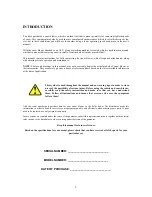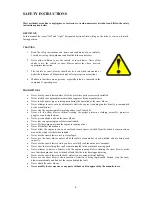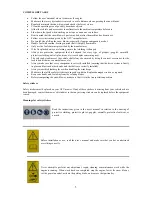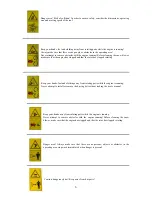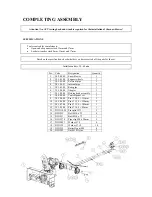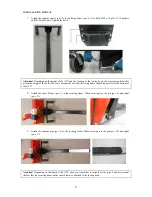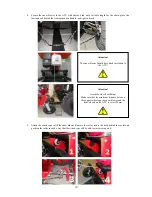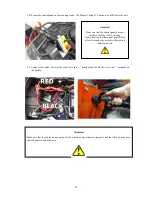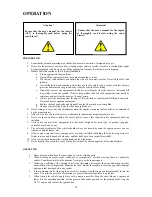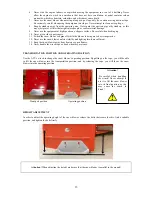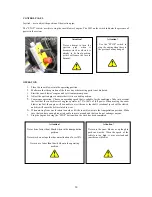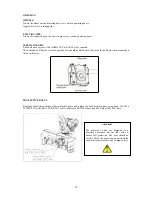
12
OPERATION
PREPARATION
1.
Examine the planned operating area carefully and remove doormats, foreign objects, etc.
2.
Never use the accessory unless you are wearing proper winter overalls. Avoid loose clothing that might
become entangled with moving parts. Wear appropriate footwear that helps to avoid slipping.
3.
Handle fuel with caution as this is highly flammable.
a.
Use an appropriate fuel container.
b.
Never fill the equipment when the engine is running or is hot.
c.
Fill the fuel tank outdoors and ensure that you are extremely careful. Never fill the fuel tank
indoors.
d.
Never fill plastic-lined containers while they are in the vehicle or on a carrier or trailer. Always
place the container on the ground away from the vehicle before filling.
e.
If possible, remove any equipment which has a petrol engine from the carrier or trailer and fill
it up while it is on the ground. If this is not possible, then fill such equipment from a mobile
container, and not from the nozzle of a petrol pump.
f.
Always press the nozzle against the edge of the fuel tank or container until filling is complete.
Never use nozzle-opening equipment.
g.
Replace the fuel cap firmly and clean off any fuel that may have been spilled.
h.
Change your clothing if any fuel has been spilled on it.
4.
Never attempt to carry out any adjustments when the engine is running (unless directly recommended
by the manufacturer).
5.
Allow the vehicle and snow blower to acclimatise to the ambient temperature before use.
6.
Never use the snow blower unless the covers, plates or any other required safety equipment has been
installed.
7.
Always use the protective equipment that has been designed for each type of product (goggles,
earmuffs, mask, and so on).
8.
The safe road-steadiness of the vehicle should always be ensured by using the appropriate accessories
(chains, counterbalances, etc).
9.
Always make sure that every component is correctly installed (including that the driving system is
firmly in place and fastened at both ends, and that belts have been correctly installed).
10.
Always wear thick leather gloves when handling the winch rope.
11.
Never modify the accessories or any other parts without the written approval of the manufacturer.
OPERATION
1.
Never place your hands or feet near, under, or in the rotating parts.
2.
When working on gravel roads, walkways or carriageways, or when crossing them, be extremely
careful. Consider possible traffic hazards. Never give a ride to passengers.
3.
Following a collision with a foreign object, stop the engine, disconnect the wires and make sure that
an accidental start is impossible. Examine the snow blower thoroughly to locate any possible damage
and repair that damage before any restart.
4.
If the equipment starts vibrating in an excessive manner, stop the engine and immediately locate the
cause. As a rule, the presence of vibration is a general indicator that there is a problem.
5.
When leaving the vehicle, apply every safety measure possible. Stop the snow blower’s engine and
lower it to the operating position, set the gears to the neutral position, set the parking brake, stop the
ATV’s engine, and remove the ignition key.
Attention!
Ensure that the user’s manual for the vehicle
(ATV) is thoroughly read before using the
snow blower!
Attention!
Ensure that the user’s manual for the engine
is thoroughly read before using the snow
blower!



